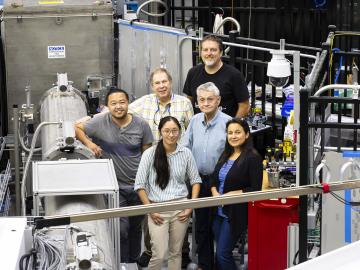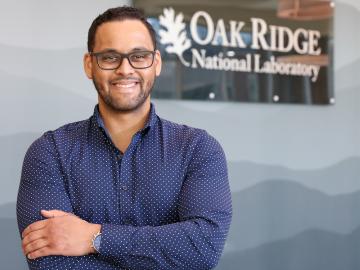
In response to a renewed international interest in molten salt reactors, researchers from the Department of Energy’s Oak Ridge National Laboratory have developed a novel technique to visualize molten salt intrusion in graphite.

In response to a renewed international interest in molten salt reactors, researchers from the Department of Energy’s Oak Ridge National Laboratory have developed a novel technique to visualize molten salt intrusion in graphite.

A team of scientists with ORNL has investigated the behavior of hafnium oxide, or hafnia, because of its potential for use in novel semiconductor applications.

Xiao-Ying Yu, a distinguished scientist at the Department of Energy’s Oak Ridge National Laboratory, has been named a Fellow of AVS: Science and Technology of Materials, Interfaces, and Processing, formerly American Vacuum Society.

Eva Zarkadoula, an R&D staff member at ORNL's Center for Nanophase Materials Sciences, has been named guest editor in a special issue on "Interface Engineering and Property Functionalization" for JOM.

When Addis Fuhr was growing up in Bakersfield, California, he enjoyed visiting the mall to gaze at crystals and rocks in the gem store.

Jingsong Huang, a staff scientist at ORNL’s Center for Nanophase Materials Sciences, has been selected as an associate editor of Frontiers in Soft Matter.

Eva Zarkadoula, an R&D staff member at ORNL’s Center for Nanophase Materials Sciences, has been appointed to the early career editorial board of Nuclear Materials and Energy.

Rama Vasudevan, a research scientist at the Department of Energy’s Oak Ridge National Laboratory, has been elected a Fellow of the American Physical Society, or APS.

Oak Ridge National Laboratory scientists recently demonstrated a low-temperature, safe route to purifying molten chloride salts that minimizes their ability to corrode metals.

Researchers from ORNL, the University of Tennessee at Chattanooga and Tuskegee University used mathematics to predict which areas of the SARS-CoV-2 spike protein are most likely to mutate.

